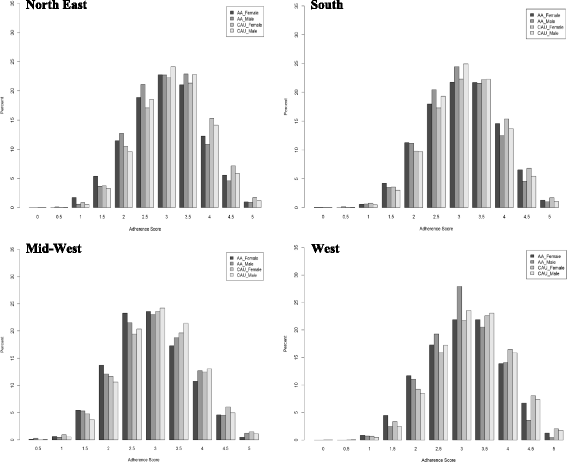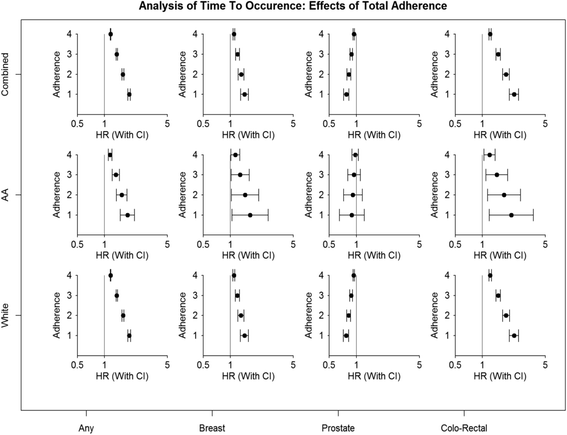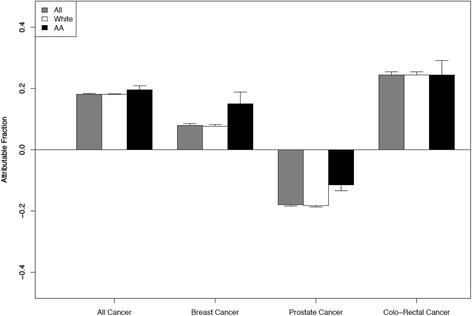Cancer-related risk factors and incidence of major cancers by race, gender and region; analysis of the NIH-AARP diet and health study
- PMID: 28854891
- PMCID: PMC5577755
- DOI: 10.1186/s12885-017-3557-1
Cancer-related risk factors and incidence of major cancers by race, gender and region; analysis of the NIH-AARP diet and health study
Abstract
Background: Racial disparities in the incidence of major cancers may be attributed to differences in the prevalence of established, modifiable risk factors such as obesity, smoking, physical activity and diet.
Methods: Data from a prospective cohort of 566,398 adults aged 50-71 years, 19,677 African-American and 450,623 Whites, was analyzed. Baseline data on cancer-related risk factors such as smoking, alcohol, physical activity and dietary patterns were used to create an individual adherence score. Differences in adherence by race, gender and geographic region were assessed using descriptive statistics, and Cox proportional hazards models were used to determine the association between adherence and cancer incidence.
Results: Only 1.5% of study participants were adherent to all five cancer-related risk factor guidelines, with marked race-, gender- and regional differences in adherence overall. Compared with participants who were fully adherent to all five cancer risk factor criteria, those adherent to one or less had a 76% increased risk of any cancer incidence (HR: 1.76, 95% CI: 1.70 - 1.82), 38% increased risk of breast cancer (HR: 1.38, 95% CI: 1.25 - 1.52), and doubled the risk of colorectal cancer (HR: 2.06, 95% CI: 1.84 - 2.29). However, risk of prostate cancer was lower among participants adherent to one or less compared with those who were fully adherent (HR: 0.79, 95% CI: 0.75 - 0.85). The proportion of cancer incident cases attributable to low adherence was higher among African-Americans compared with Whites for all cancers (21% vs. 19%), and highest for colorectal cancer (25%) regardless of race.
Conclusion: Racial differences in the proportion of cancer incidence attributable to low adherence suggests unique opportunities for targeted cancer prevention strategies that may help eliminate racial disparities in cancer burden among older US adults.
Keywords: Cancer incidence; Cancer-related risk factors; Diet; Obesity; Physical activity.
Conflict of interest statement
Authors’ information
NA.
Ethics approval and consent to participate
Informed consent was obtained from all study participants for the NIH-AARP study and this study was approved by the University of Alabama at Birmingham Institutional Review Board (Protocol #: E150623007).
Consent for publication
NA.
Competing interests
The authors declare that they have no competing interests.
Publisher’s Note
Springer Nature remains neutral with regard to jurisdictional claims in published maps and institutional affiliations.
Figures



References
-
- ACS. Cancer facts & figures: American Cancer Society; 2016.
MeSH terms
Grants and funding
LinkOut - more resources
Full Text Sources
Other Literature Sources

